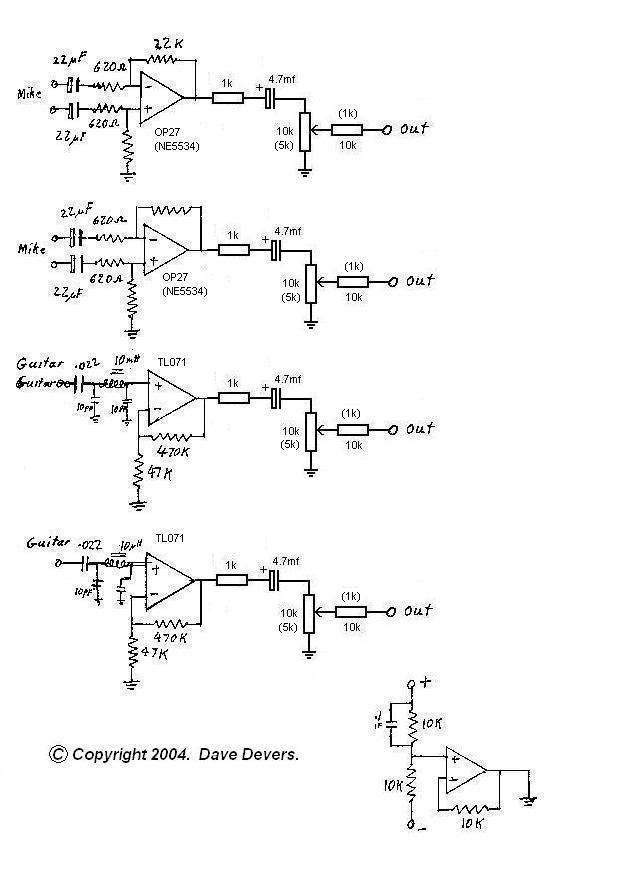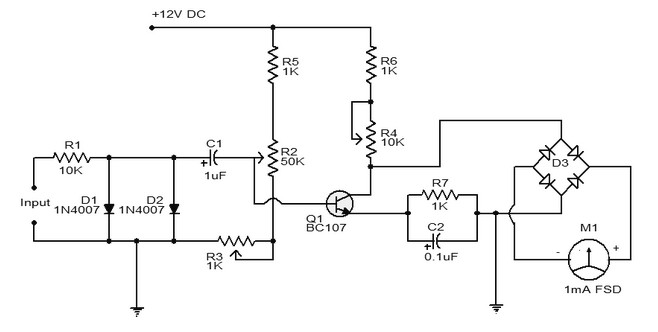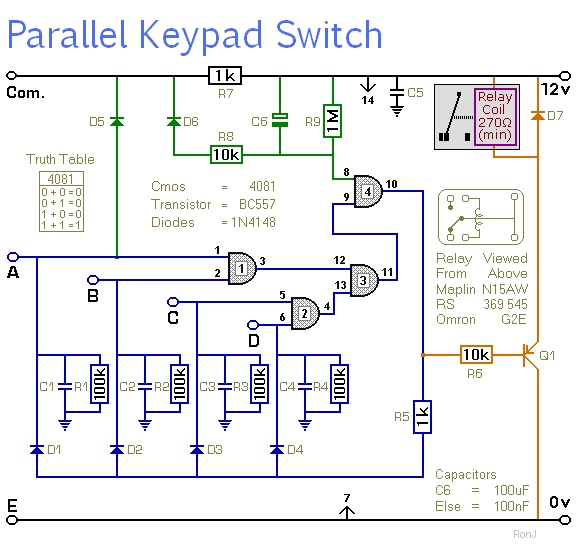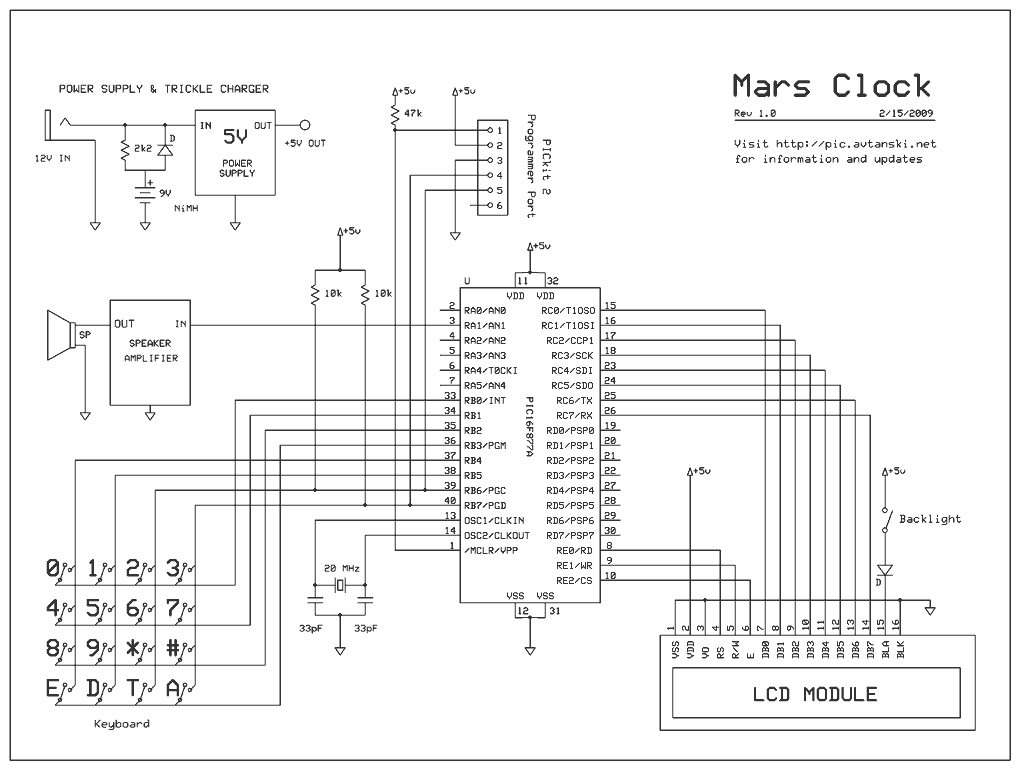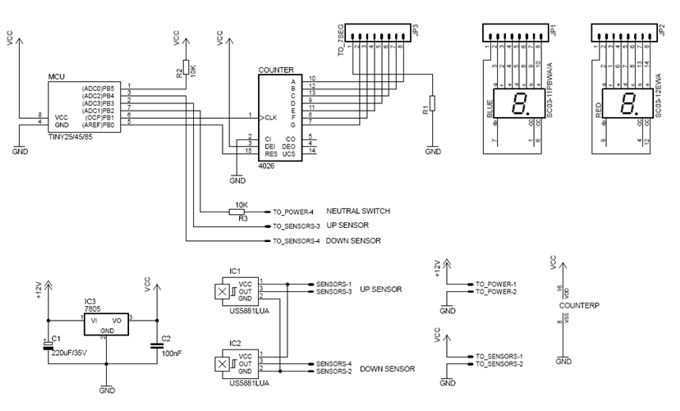
Electronic Keypad Combination Lock
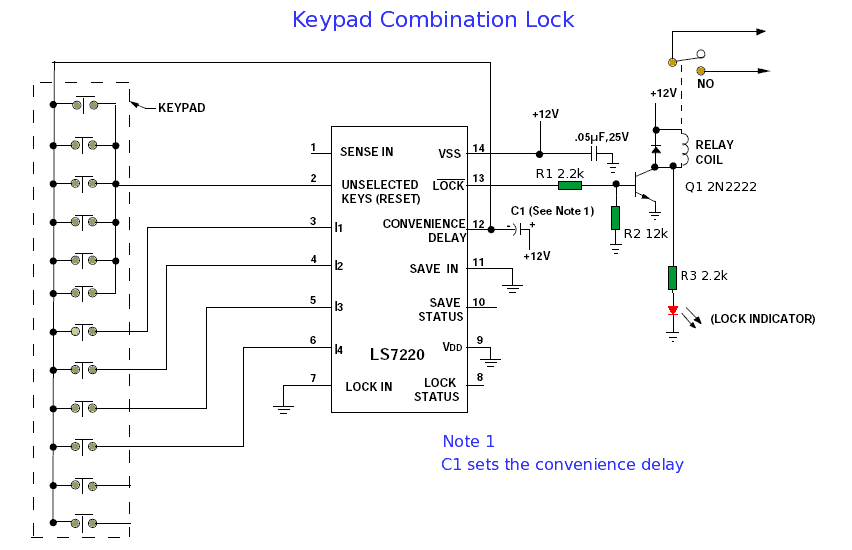
When connected to a ten-digit keypad, the circuit can identify one four-digit combination from a total of 5040 possible codes. Upon entering the correct four-digit sequence from the keypad, the LOCK feature activates while the Lock Status deactivates. The lock combination is determined by pins 3, 4, 5, and 6 on the LS7220, which align with the digits on the keypad. For instance, to set a combination of 8462, key 8 should be connected to pin 3, key 4 to pin 4, key 6 to pin 5, and key 2 to pin 6. Any keys that are not utilized are connected to pin 2. An input signal on pin 2 will reset the lock combination. The keypad must have individual connections for each key as well as a common return key. The return key is connected to pin 12 of the LS7220. Alternatively, a group of switches can be wired in parallel.
The described circuit utilizes the LS7220 integrated circuit, which is designed to manage input from a keypad for security applications. The LS7220 functions as a digital lock controller, processing the input signals from the keypad to determine if the entered combination matches the pre-set combination.
The ten-digit keypad consists of individual switches for each digit, ensuring that each key press is registered distinctly. The connection of the keys to the LS7220 is critical for accurate detection; thus, proper wiring must be maintained. Pins 3, 4, 5, and 6 are specifically allocated for the four digits of the lock combination, while pin 2 serves as a reset line, allowing the user to clear the current combination if needed.
The return key, connected to pin 12, acts as a confirmation input, signaling the LS7220 to process the entered combination. This design ensures that the circuit can effectively manage user inputs and provide feedback through the LOCK and Lock Status indicators.
In applications where multiple key presses may occur, the circuit's design must accommodate debouncing techniques to ensure that each key press is registered accurately without false triggering. Additionally, the use of pull-up or pull-down resistors may be necessary to stabilize the input signals from the keypad.
For enhanced security, it may be beneficial to include features such as lockout mechanisms after a certain number of incorrect attempts, or the integration of additional security measures like timers or alarms. The simplicity and effectiveness of the LS7220-based lock circuit make it suitable for various applications, from simple door locks to more complex security systems.When wired to a ten-digit keypad, the circuit will recognize one 4 digit combination out of a possible 5040 codes. When the programmed four-digit combination is entered from the keypad, in proper sequence, LOCK turns on and Lock Status turns off.
The lock combination is set by pins 3, 4, 5 and 6 on the LS7220. These correspond to the digits on the k eypad. So if for example you wanted to set a combination of 8462, wire key 8 to pin3, key 4 to input 4, key 6 to input 5 and key 2 of the keypad to input 6. Any unused keys are wired to pin 2. An input on pin 2 resets the lock combination. The keypad must have individual connections for each key and a common return key. The return key is wired to pin 12 of the LS7220. The alternative is to wire a group of switches in parallel. 🔗 External reference
The described circuit utilizes the LS7220 integrated circuit, which is designed to manage input from a keypad for security applications. The LS7220 functions as a digital lock controller, processing the input signals from the keypad to determine if the entered combination matches the pre-set combination.
The ten-digit keypad consists of individual switches for each digit, ensuring that each key press is registered distinctly. The connection of the keys to the LS7220 is critical for accurate detection; thus, proper wiring must be maintained. Pins 3, 4, 5, and 6 are specifically allocated for the four digits of the lock combination, while pin 2 serves as a reset line, allowing the user to clear the current combination if needed.
The return key, connected to pin 12, acts as a confirmation input, signaling the LS7220 to process the entered combination. This design ensures that the circuit can effectively manage user inputs and provide feedback through the LOCK and Lock Status indicators.
In applications where multiple key presses may occur, the circuit's design must accommodate debouncing techniques to ensure that each key press is registered accurately without false triggering. Additionally, the use of pull-up or pull-down resistors may be necessary to stabilize the input signals from the keypad.
For enhanced security, it may be beneficial to include features such as lockout mechanisms after a certain number of incorrect attempts, or the integration of additional security measures like timers or alarms. The simplicity and effectiveness of the LS7220-based lock circuit make it suitable for various applications, from simple door locks to more complex security systems.When wired to a ten-digit keypad, the circuit will recognize one 4 digit combination out of a possible 5040 codes. When the programmed four-digit combination is entered from the keypad, in proper sequence, LOCK turns on and Lock Status turns off.
The lock combination is set by pins 3, 4, 5 and 6 on the LS7220. These correspond to the digits on the k eypad. So if for example you wanted to set a combination of 8462, wire key 8 to pin3, key 4 to input 4, key 6 to input 5 and key 2 of the keypad to input 6. Any unused keys are wired to pin 2. An input on pin 2 resets the lock combination. The keypad must have individual connections for each key and a common return key. The return key is wired to pin 12 of the LS7220. The alternative is to wire a group of switches in parallel. 🔗 External reference
Warning: include(partials/cookie-banner.php): Failed to open stream: Permission denied in /var/www/html/nextgr/view-circuit.php on line 713
Warning: include(): Failed opening 'partials/cookie-banner.php' for inclusion (include_path='.:/usr/share/php') in /var/www/html/nextgr/view-circuit.php on line 713
